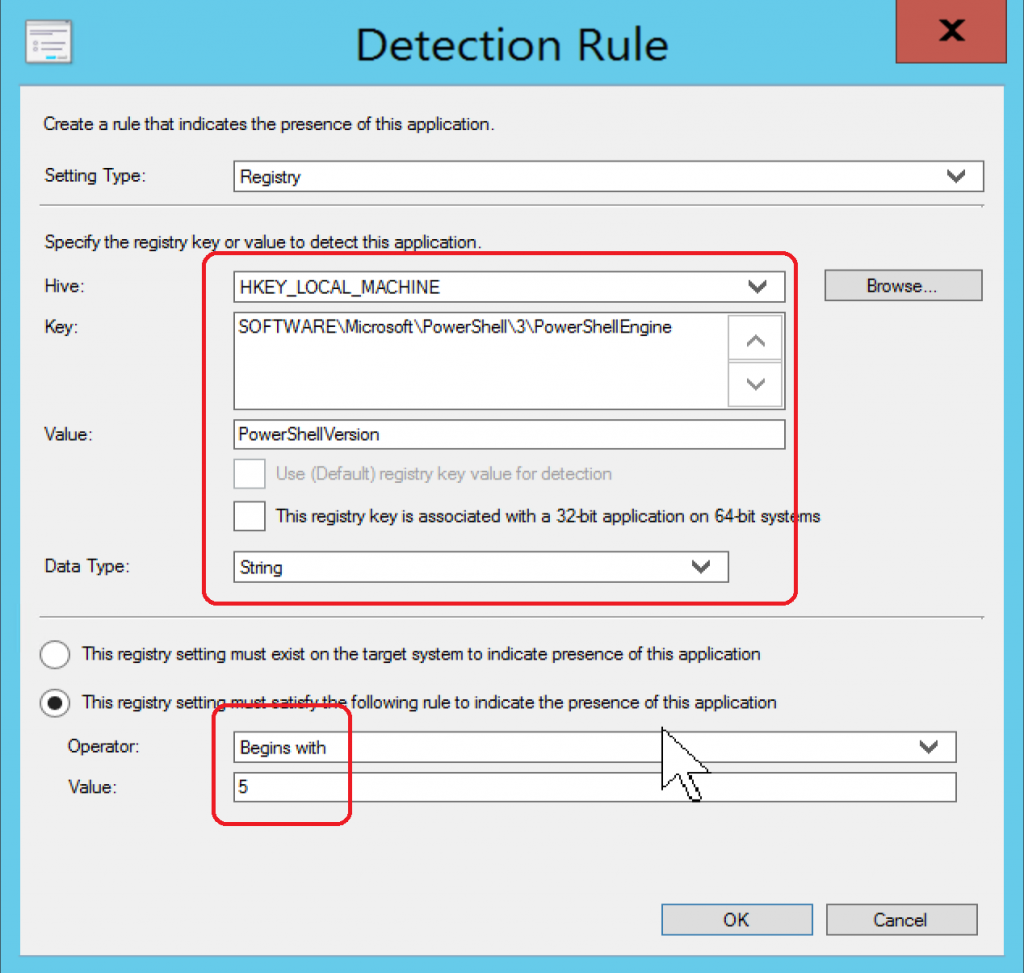[vc_row][vc_column][vc_column_text]Hi there,
In this post I will be covering how to deploy Windows Management Framework 5.0 (WMF) with SCCM Current Branch (works just as well with 2012). The tricky (not all that trickey really) part of this application is the detection method. Given it’s not an MSI using a product code is out, however there is nice neat PowerShell registry key you can use as the detection method. Keep reading, it gets exciting ahead.
[br]
First, start the process of creating the application. You will need to create a “Script based” Deployment Type as the installer is a .msu. In this example I am using the Windows 8.1/Server 2012 R2 installer. There are installers for Windows 7 Service Pack 1, Windows Server 2008 R2 SP1, and Windows Server 2012 as well (Download Link at the bottom of this post). Since it’s an MSU, we will use the native wusa utility to install the update. Here’s the command lines I used:
[br]
Install:
wusa "Win8.1AndW2K12R2-KB3134758-x64.msu" /quiet /norestart /log:"%TEMP%\WMF5.log"
Uninstall:
wusa /uninstall "Win8.1AndW2K12R2-KB3134758-x64.msu" /quiet /norestart /log:"%TEMP%\WMF5_uninstall.log"
[br]

[br]
And for the detection method you can use the following PowerShell registry key:
HKEY_LOCAL_MACHINE\SOFTWARE\Microsoft\PowerShell\3\PowerShellEngine
With the rule that the key PowerShellVersion must begin with 5 (The actual value of the current installer is 5.0.10586.117)
[br]

[br]
Once WMF is installed, this key is updated and the detection method shows a successfully deployment (pending a soft reboot of course).
[br]
Download WMF5 here:
https://www.microsoft.com/en-us/download/details.aspx?id=50395
[br]
If you aren’t deploying WMF 5 in your organization yet I would take a close look. Here are some of the new features:
- Just Enough Administration (JEA)
- Creating Custom Types using PowerShell Classes
- Improvements in PowerShell Script Debugging
- Improvements in Desired State Configuration (DSC)
- Audit PowerShell Usage using Transcription and Logging
- Software Discovery, Install and Inventory with PackageManagement
- PowerShell Module Discovery, Install and Inventory with PowerShellGet
- PowerShell Script Discovery, Install and Management with PowerShellGet
- New and updated cmdlets based on community feedback
- Information Stream
- Generate PowerShell Cmdlets based on OData Endpoint
- Network Switch Management with PowerShell
- Software Inventory Logging (SIL)
[br]
Thanks for reading. Now get out there and start deploying!
[/vc_column_text][/vc_column][/vc_row]